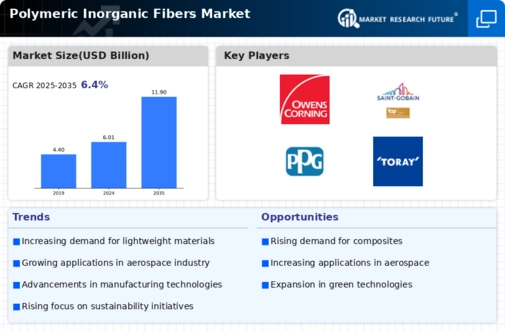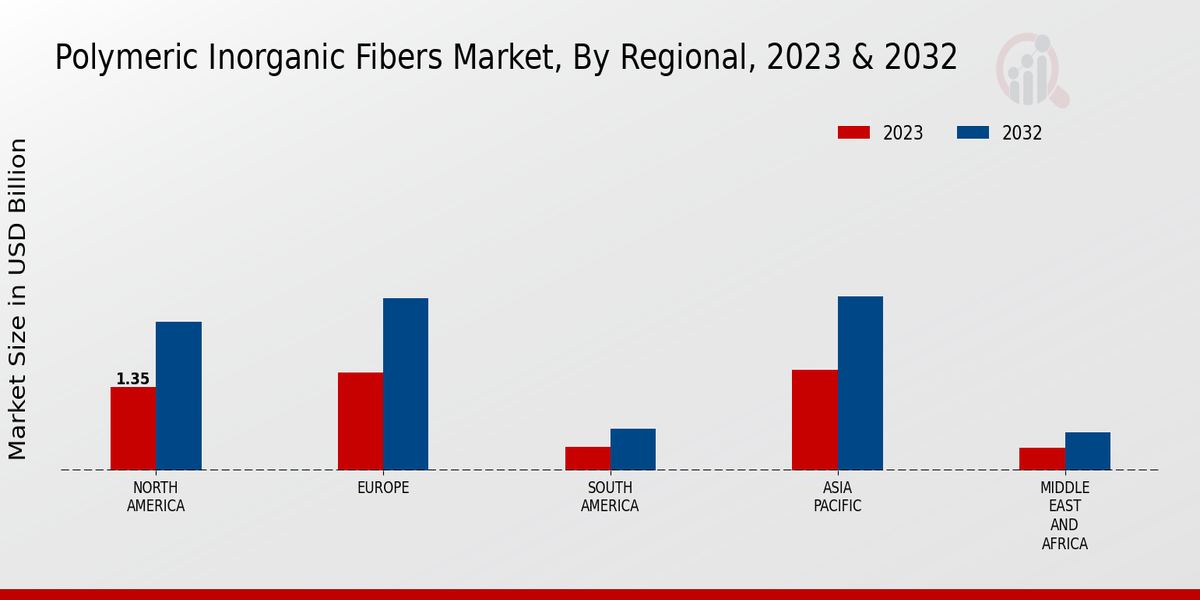Market Growth Projections
Emerging Markets and Economic Growth
Emerging markets are witnessing rapid economic growth, which significantly influences the Global Polymeric Inorganic Fibers Market Industry. Countries in Asia-Pacific and Latin America are increasingly investing in infrastructure development and industrialization, leading to a heightened demand for advanced materials. The growing middle class in these regions is also driving consumption patterns that favor high-performance materials. As these economies expand, the market is expected to benefit from increased applications across various sectors, including automotive and textiles. This trend underscores the potential for substantial market growth as these regions continue to develop and modernize.
Growing Applications in Construction
The construction sector increasingly adopts polymeric inorganic fibers for their superior performance characteristics, which significantly impacts the Global Polymeric Inorganic Fibers Market Industry. These fibers enhance the durability and strength of concrete, leading to improved structural integrity and longevity of buildings. For example, the integration of these fibers in concrete mixtures can reduce cracking and increase resistance to environmental factors. As urbanization continues to rise globally, the demand for sustainable and resilient construction materials is expected to grow, further propelling the market. This trend aligns with the projected CAGR of 6.43% from 2025 to 2035, indicating robust growth potential.
Rising Demand in Aerospace and Defense
The Global Polymeric Inorganic Fibers Market Industry experiences a notable surge in demand from the aerospace and defense sectors. These industries increasingly utilize polymeric inorganic fibers due to their lightweight properties and high thermal resistance. For instance, the incorporation of these fibers in aircraft components enhances fuel efficiency and safety. As of 2024, the market is valued at approximately 6.01 USD Billion, reflecting the growing reliance on advanced materials in critical applications. This trend is expected to continue, with projections indicating a market growth to 11.9 USD Billion by 2035, driven by innovations in aerospace technology.
Advancements in Manufacturing Technologies
Innovations in manufacturing technologies significantly influence the Global Polymeric Inorganic Fibers Market Industry. The development of advanced production techniques, such as electrospinning and 3D printing, enables the creation of fibers with enhanced properties and functionalities. These advancements facilitate the production of fibers that are not only stronger but also more versatile, catering to various applications across industries. The ability to customize fiber properties according to specific requirements is likely to attract more investments and applications, thereby contributing to the market's growth trajectory. As the industry evolves, these technologies are expected to play a pivotal role in shaping future trends.
Environmental Regulations and Sustainability
Increasing environmental regulations and a global shift towards sustainability are pivotal drivers for the Global Polymeric Inorganic Fibers Market Industry. Governments worldwide are implementing stricter regulations on material usage and waste management, prompting industries to seek eco-friendly alternatives. Polymeric inorganic fibers, known for their recyclability and lower environmental impact, align well with these regulatory frameworks. As industries strive to meet sustainability goals, the demand for these fibers is likely to rise. This shift not only supports compliance with regulations but also enhances brand reputation, making it a critical factor in the market's expansion.






